Features
Jaffna Revisited- Some Quick Impressions On Post-War Development

by C. Narayanasuwami
(Formerly of the Ceylon Civil Service and Retired Senior Professional of the Asian Development Bank)
My recent visit to Jaffna after several years of forbidden travel due to the pandemic provided an opportunity to revisit areas of interest and observe the changes, including positive and negative developments, in both the economic and social fronts. It was a quick visit and unexpectedly its timing coincided with the visit of the President who declared open the Jaffna Cultural Centre on February 11. The festive atmosphere that prevailed on that day was combined with a subdued celebration of the 75th anniversary of Sri Lanka’s Independence. The atmosphere signified that Jaffna is slowly emerging from the isolation that kept its charms hidden.
Economic Activities
The war-torn city of Jaffna is coming back to life after almost three decades and three years of the pandemic while struggling to cope with day-to-day cost of living pressures and erosion of well entrenched societal values. One could witness the disappearance of bullet marked buildings which are being renovated with remittances received from overseas.
The end of the war saw significant road development initiatives sponsored by the central government. This resulted in paved roads including the major A-9 artery and other pivotal highways that connect Kankesanthurai, Palaly and Point Pedro. Unfortunately, some areas did not benefit from this uneven development. For example, the road leading to some of the main Islands like Velanai, Pungudutivu and Nainathivu is in a dire state requiring immediate attention. There could be similar situations elsewhere not traversed by this writer.
Renovation of old houses and temples, and establishment of small businesses appear to have occurred during the pandemic. The emergence of supermarkets combined with a surfeit of wedding halls give the impression that there was money circulating in the community despite lack of evidence of enhanced economic activity -remittances from abroad have been used to reconstruct damaged houses and buildings as well as invest in some less productive ventures. Anecdotal evidence suggests that most of the wedding halls will soon be white elephants!
While construction activities proceeded on a small scale with private funding, public places like the Jaffna market and Tinnevely market areas remained largely untouched. Except for the cleaning up and beautification of Aryakulam and its environs with a benefactor’s contribution, the Jaffna Municipal Council does not appear to have initiated any significant renovation and refurbishment work in public areas. The development of the Aryakulam area into a place of both historical and touristic attraction is a welcome move but may require further investments to enhance its potential.
In a city where the primary mode of transport was bicycles, the growth in the number of scooters signified that overseas remittances were occasionally put to good use despite contradictions in the way funds were invested. The Jaffna youth considered the possession of scooters as a status symbol in addition to its practical value as a transportation mode. This has also helped older adults to be less dependent on public transport to get to work and attend to household activities.
In anticipation of an influx of tourists, increased number of medium sized hotels and resorts and a plethora of guesthouses have sprung up in the last few years. Many of the guesthouses remain empty although hotel occupancy rates are improving with south-north traffic and a sprinkling of overseas tourists.
An interesting development is taking place consequent to the removal of border controls. The movement of Sinhalese from the south has increased considerably and their involvement in some economic activities has created an opportunity for increased social interaction with the Tamils. Substantial number of people travel from the south to visit religious places in Nagadeepa/Nainatheevu and other areas of social interest.
The number of visitors from the south outnumbered those from within Jaffna on the day the author visited Keerimalai Springs, a place noted for its religious significance and healing properties. Another event comes to mind-the author witnessed a busload of visitors from the south entering the Jaffna market after visiting Sri Naga Vihara and negotiating prices for products in Sinhala. It was interesting to observe that proficiency in the Sinhala language among Tamil traders was even better than their counterparts in Colombo. This situation raises hopes that movement of people irrespective of their race, religion or caste will now promote unity in diversity and greater interaction among the country’s diverse population.
Social Development
The social structure is reported to be crumbling. The social stratification that encompassed caste-based divisions which continued to survive the onslaught of the civil war is now co-existing with clan- based divisions resulting in sharp deterioration in the social order. The emergence of gangs engaged in criminal activities using swords as weapons combined with indiscriminate use of drugs among the youth have created a divisive population.
In contrast to this development however, a substantial number of youth pursuing higher studies have shown keenness in their studies. What was gratifying were the scenes witnessed in many roadside areas where queues of students on bicycles were waiting for their turn to attend tuition classes. The difference was that such students were always accompanied by one of their parents compared to what prevailed a decade or two ago when the same practice of attending tuition classes rested entirely with the students themselves. This sharp difference has apparently arisen due to the fear that unaccompanied students would fall a prey to drug use and other socially disruptive practices.
An Assessment
Is Jaffna booming, blooming or busting is the question that arises in the minds of those familiar with Jaffna’s heritage, historical background, culture and socioeconomic development patterns. Jaffna is going through a process of transformation which displays both positive and negative features. The author, in his book entitled, ‘Managing Development: People, Policies, and Institutions’ launched in Colombo under the auspices of the current President (then Prime Minister) in August 2019 and later in Sydney, Australia in September 2019, and in Manila, Philippines in November 2019 had this to say about development,
“Development is about people. People are both partners and beneficiaries of change. Good policies and effective institutions provide the basis for sound development management. Successful institutions derive their power from competent leaders and good management practices. The pace and process of development are determined by good governance and strengthened capacity to implement and manage projects”.
Viewed from this perspective there are shortfalls and issues relating to policies, appropriate institutional structure and oversight and sound governance, including dynamic leadership and management, providing form and content to structured development at the local level.
Positive developments
Regaining confidence in the stability of life which had been badly battered during the civil war and subsequent post-war period could be considered a significant positive feature. Although the pandemic had an adverse impact on agricultural activities there was progressive participation in pursuits that kept people engaged in productive occupations. At present farming activities are slowly building up though not to the levels of the pre-war situation.
Non-farm activities comprised opening of small-scale grocery stores, supermarkets, fisheries and general business ventures and mixed trading enterprises, including tourism related ventures. Supermarkets and agro-industrial enterprises such as mills, and packaging industries have generated some employment among the youth. Infrastructure development, one of the key features of post war development, has had both positive and negative impacts due to uneven spread and lack of adoption of a strategic planning approach.
Education has been identified as an industry in the Jaffna peninsula from the time of the British and continues to be so even now although standardisation of university admissions in the 1970s caused a substantial setback. However, the level of interest in pursuing higher studies is evident in the keenness shown by students to follow tuition classes despite obstacles.
The participation of people from the south in economic activities has brought the Sinhala-Tamil communities together and with or without their knowledge they are promoting inter-communal harmony and social integration.
Limiting Factors
The primary limiting factor is the lack of a planned investment pattern, both public and private, that has resulted in uneven and lopsided development which has contributed to unproductive ventures mushrooming in several parts of the city. This was confirmed by many, including legislators who understand the pulse of the people better. Some of the supermarkets located in distant areas were reported to be on the verge of closing due to lack of business. The practicality and sustainability of these ventures were not subjected to critical examination at the planning stage. The same applies to guesthouses many of which have had no guests for months.
Another limiting factor is the drug menace which seems to attract the marginalised youth who, having suffered from the trauma, loss of life and poverty during and after the war, found an escape route provided by unscrupulous and influential drug traffickers.
Conclusions
Jaffna is moving forward and is witnessing a positive transformation, albeit with limitations arising from ill-planned, adhoc and disjointed interventions spanning the entire development domain. The absence of investments in any major industrial venture suggests that long-term investment planning has been missing. A distinguishing feature of the development pattern is that investment funds came largely from overseas remittances with no significant inputs from successful local entrepreneurs or from local government institutions.
This needs to be reversed and funds should be generated within the country at central and local levels if the pattern of investment is to be directed at ventures that will have a durable impact on the society with their economic and social viability assessed and analysed critically at the planning stage. This however does not preclude external financing provided it is channelled appropriately.
There needs to be a centrally located planning entity or a technically competent approval body which could coordinate the approval, supervision and monitoring of new ventures based on their relevance and economic value. An overarching body of this nature could possibly fall under varying authority levels depending on the scope, nature, and size of the investment portfolio; under the district secretariat, the Governor or the Jaffna Municipal Council, as appropriate.
The social issues, including drug trafficking, need to be tackled with appropriate intervention, supervision and funding from both central and local government levels. The establishment of an effective, high level task force comprising representatives from civil, military, police and NGO’s to handle crime and drug use could play a pivotal role to apprehend offenders, seek appropriate punishments, and enforce rehabilitation activities endorsed by medical and social welfare institutions.
Features
The US-China rivalry and challenges facing the South
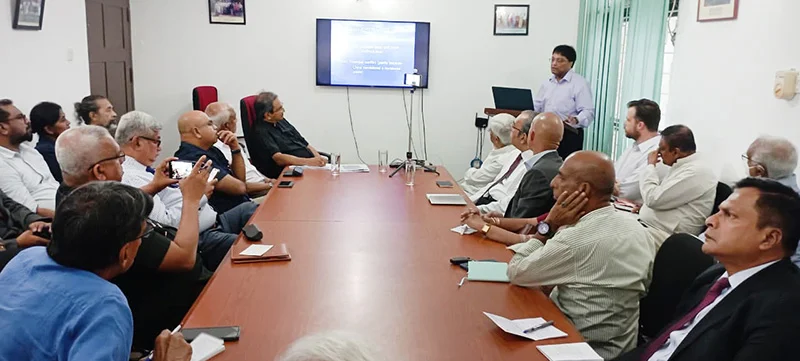
 The US-China rivalry could be said to make-up the ‘stuff and substance’ of world politics today but rarely does the international politics watcher and student of the global South in particular get the opportunity of having a balanced and comprehensive evaluation of this crucial relationship. But such a balanced assessment is vitally instrumental in making sense of current world power relations.
The US-China rivalry could be said to make-up the ‘stuff and substance’ of world politics today but rarely does the international politics watcher and student of the global South in particular get the opportunity of having a balanced and comprehensive evaluation of this crucial relationship. But such a balanced assessment is vitally instrumental in making sense of current world power relations.
Thanks to the Regional Centre for Strategic Studies (RCSS), Colombo the above window of opportunity was opened on December 8th for those sections of the public zealously pursuing an understanding of current issues in global politics. The knowledge came via a forum that was conducted at the RCSS titled, ‘The US-China Rivalry and Implications for the Indo-Pacific’, where Professor Neil DeVotta of the Wake Forest University of North Carolina in the US, featured as the speaker.
A widely representative audience was present at the forum, including senior public servants, the diplomatic corps, academics, heads of civil society organizations, senior armed forces personnel and the media. The event was ably managed by the Executive Director of the RCSS, retired ambassador Ravinatha Aryasinha. Following the main presentation a lively Q&A session followed, where many a point of interest was aired and discussed.
While there is no doubt that China is fast catching up with the US with regard to particularly military, economic, scientific and technological capability, Prof. DeVotta helped to balance this standard projection of ‘China’s steady rise’ by pointing to some vital facts about China, the omission of which would amount to the observer having a somewhat uninformed perception of global political realities.
The following are some of the facts about contemporary China that were highlighted by Prof. DeVotta:
* Money is steadily moving out of China and the latter’ s economy is slowing down. In fact the country is in a ‘ Middle Income Trap’. That is, it has reached middle income status but has failed to move to upper income status since then.
* People in marked numbers are moving out of China. It is perhaps little known that some Chinese are seeking to enter the US with a view to living there. The fact is that China’s population too is on the decline.
* Although the private sector is operative in China, there has been an increase in Parastatals; that is, commercial organizations run by the state are also very much in the fore. In fact private enterprises have begun to have ruling Communist Party cells in them.
* China is at its ‘peak power’ but this fact may compel it to act ‘aggressively’ in the international sphere. For instance, it may be compelled to invade Taiwan.
* A Hard Authoritarianism could be said to characterize central power in China today, whereas the expectation in some quarters is that it would shift to a Soft Authoritarian system, as is the case in Singapore.
* China’s influence in the West is greater than it has ever been.
The speaker was equally revelatory about the US today. Just a few of these observations are:
* The US is in a ‘Unipolar Moment’. That is, it is the world’s prime power. Such positions are usually not longstanding but in the case of the US this position has been enjoyed by it for quite a while.
* China is seen by the US as a ‘Revisionist Power’ as opposed to being a ‘Status Quo Power.’ That is China is for changing the world system slowly.
* The US in its latest national security strategy is paying little attention to Soft Power as opposed to Hard Power.
* In terms of this strategy the US would not allow any single country to dominate the Asia-Pacific region.
* The overall tone of this strategy is that the US should step back and allow regional powers to play a greater role in international politics.
* The strategy also holds that the US must improve economic ties with India, but there is very little mention of China in the plan.
Given these observations on the current international situation, a matter of the foremost importance for the economically weakest countries of the South is to figure out how best they could survive materially within it. Today there is no cohesive and vibrant collective organization that could work towards the best interests of the developing world and Dr. DeVotta was more or less correct when he said that the Non-alignment Movement (NAM) has declined.
However, this columnist is of the view that rather being a spent force, NAM was allowed to die out by the South. NAM as an idea could never become extinct as long as economic and material inequalities between North and South exist. Needless to say, this situation is remaining unchanged since the eighties when NAM allowed itself to be a non-entity so to speak in world affairs.
The majority of Southern countries did not do themselves any good by uncritically embracing the ‘market economy’ as a panacea for their ills. As has been proved, this growth paradigm only aggravated the South’s development ills, except for a few states within its fold.
Considering that the US would be preferring regional powers to play a more prominent role in the international economy and given the US’ preference to be a close ally of India, the weakest of the South need to look into the possibility of tying up closely with India and giving the latter a substantive role in advocating the South’s best interests in the councils of the world.
To enable this to happen the South needs to ‘get organized’ once again. The main differences between the past and the present with regard to Southern affairs is that in the past the South had outstanding leaders, such as Jawaharlal Nehru of India, who could doughtily stand up for it. As far as this columnist could ascertain, it is the lack of exceptional leaders that in the main led to the decline of NAM and other South-centred organizations.
Accordingly, an urgent task for the South is to enable the coming into being of exceptional leaders who could work untiringly towards the realization of its just needs, such as economic equity. Meanwhile, Southern countries would do well to, indeed, follow the principles of NAM and relate cordially with all the major powers so as to realizing their best interests.
Features
Sri Lanka and Global Climate Emergency: Lessons of Cyclone Ditwah
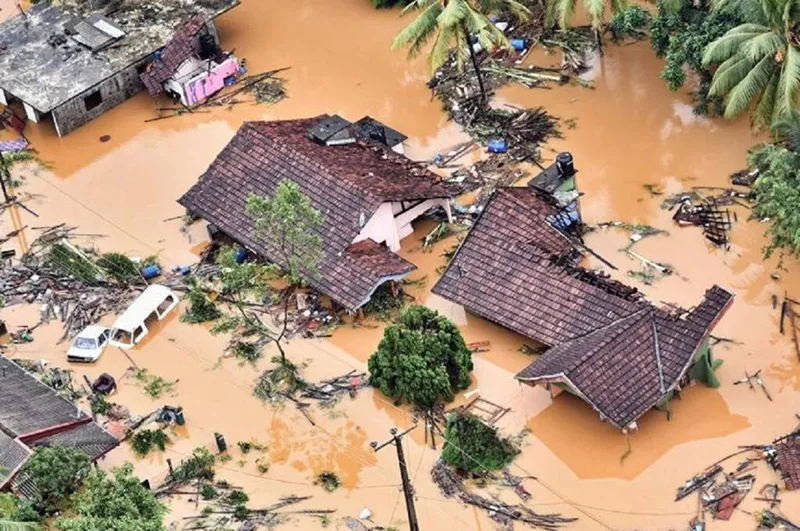
Tropical Cyclone Ditwah, which made landfall in Sri Lanka on 28 November 2025, is considered the country’s worst natural disaster since the deadly 2004 tsunami. It intensified the northeast monsoon, bringing torrential rainfall, massive flooding, and 215 severe landslides across seven districts. The cyclone left a trail of destruction, killing nearly 500 people, displacing over a million, destroying homes, roads, and railway lines, and disabling critical infrastructure including 4,000 transmission towers. Total economic losses are estimated at USD 6–7 billion—exceeding the country’s foreign reserves.
The Sri Lankan Armed Forces have led the relief efforts, aided by international partners including India and Pakistan. A Sri Lanka Air Force helicopter crashed in Wennappuwa, killing the pilot and injuring four others, while five Sri Lanka Navy personnel died in Chundikkulam in the north while widening waterways to mitigate flooding. The bravery and sacrifice of the Sri Lankan Armed Forces during this disaster—as in past disasters—continue to be held in high esteem by grateful Sri Lankans.
The Sri Lankan government, however, is facing intense criticism for its handling of Cyclone Ditwah, including failure to heed early warnings available since November 12, a slow and poorly coordinated response, and inadequate communication with the public. Systemic issues—underinvestment in disaster management, failure to activate protocols, bureaucratic neglect, and a lack of coordination among state institutions—are also blamed for avoidable deaths and destruction.
The causes of climate disasters such as Cyclone Ditwah go far beyond disaster preparedness. Faulty policymaking, mismanagement, and decades of unregulated economic development have eroded the island’s natural defenses. As climate scientist Dr. Thasun Amarasinghe notes:
“Sri Lankan wetlands—the nation’s most effective natural flood-control mechanism—have been bulldosed, filled, encroached upon, and sold. Many of these developments were approved despite warnings from environmental scientists, hydrologists, and even state institutions.”
Sri Lanka’s current vulnerabilities also stem from historical deforestation and plantation agriculture associated with colonial-era export development. Forest cover declined from 82% in 1881 to 70% in 1900, and to 54–50% by 1948, when British rule ended. It fell further to 44% in 1954 and to 16.5% by 2019.
Deforestation contributes an estimated 10–12% of global greenhouse gas emissions. Beyond removing a vital carbon sink, it damages water resources, increases runoff and erosion, and heightens flood and landslide risk. Soil-depleting monocrop agriculture further undermines traditional multi-crop systems that regenerate soil fertility, organic matter, and biodiversity.
In Sri Lanka’s Central Highlands, which were battered by Cyclone Ditwah, deforestation and unregulated construction had destabilised mountain slopes. Although high-risk zones prone to floods and landslides had long been identified, residents were not relocated, and construction and urbanisation continued unchecked.
Sri Lanka was the first country in Asia to adopt neoliberal economic policies. With the “Open Economy” reforms of 1977, a capitalist ideology equating human well-being with quantitative growth and material consumption became widespread. Development efforts were rushed, poorly supervised, and frequently approved without proper environmental assessment.
Privatisation and corporate deregulation weakened state oversight. The recent economic crisis and shrinking budgets further eroded environmental and social protections, including the maintenance of drainage networks, reservoirs, and early-warning systems. These forces have converged to make Sri Lanka a victim of a dual climate threat: gradual environmental collapse and sudden-onset disasters.
Sri Lanka: A Climate Victim
Sri Lanka’s carbon emissions remain relatively small but are rising. The impact of climate change on the island, however, is immense. Annual mean air temperature has increased significantly in recent decades (by 0.016 °C annually between 1961 and 1990). Sea-level rise has caused severe coastal erosion—0.30–0.35 meters per year—affecting nearly 55% of the shoreline. The 2004 tsunami demonstrated the extreme vulnerability of low-lying coastal plains to rising seas.
The Cyclone Ditwah catastrophe was neither wholly new nor surprising. In 2015, the Geneva-based Internal Displacement Monitoring Centre (IDMC) identified Sri Lanka as the South Asian country with the highest relative risk of disaster-related displacement: “For every million inhabitants, 15,000 are at risk of being displaced every year.”
IDMC also noted that in 2017 the country experienced seven disaster events—mainly floods and landslides—resulting in 135,000 new displacements and that Sri Lanka “is also at risk for slow-onset impacts such as soil degradation, saltwater intrusion, water scarcity, and crop failure”.
Sri Lanka ranked sixth among countries most affected by extreme weather events in 2018 (Germanwatch) and second in 2019 (Global Climate Risk Index). Given these warnings, Cyclone Ditwah should not have been a surprise. Scientists have repeatedly cautioned that warmer oceans fuel stronger cyclones and warmer air holds more moisture, leading to extreme rainfall. As the Ceylon Today editorial of December 1, 2025 also observed:
“…our monsoons are no longer predictable. Cyclones form faster, hit harder, and linger longer. Rainfall becomes erratic, intense, and destructive. This is not a coincidence; it is a pattern.”
Without urgent action, even more extreme weather events will threaten Sri Lanka’s habitability and physical survival.
A Global Crisis
Extreme weather events—droughts, wildfires, cyclones, and floods—are becoming the global norm. Up to 1.2 billion people could become “climate refugees” by 2050. Global warming is disrupting weather patterns, destabilising ecosystems, and posing severe risks to life on Earth. Indonesia and Thailand were struck by the rare and devastating Tropical Cyclone Senyar in late November 2025, occurring simultaneously with Cyclone Ditwah’s landfall in Sri Lanka.
More than 75% of global greenhouse gas emissions—and nearly 90% of carbon emissions—come from burning coal, oil, and gas, which supply about 80% of the world’s energy. Countries in the Global South, like Sri Lanka, which contribute least to greenhouse gas emissions, are among the most vulnerable to climate devastation. Yet wealthy nations and multilateral institutions, including the World Bank, continue to subsidise fossil fuel exploration and production. Global climate policymaking—including COP 30 in Belém, Brazil, in 2025—has been criticised as ineffectual and dominated by fossil fuel interests.
If the climate is not stabilised, long-term planetary forces beyond human control may be unleashed. Technology and markets are not inherently the problem; rather, the issue lies in the intentions guiding them. The techno-market worldview, which promotes the belief that well-being increases through limitless growth and consumption, has contributed to severe economic inequality and more frequent extreme weather events. The climate crisis, in turn, reflects a profound mismatch between the exponential expansion of a profit-driven global economy and the far slower evolution of human consciousness needed to uphold morality, compassion, generosity and wisdom.
Sri Lanka’s 2025–26 budget, adopted on November 14, 2025—just as Cyclone Ditwah loomed—promised subsidised land and electricity for companies establishing AI data centers in the country.
President Anura Kumara Dissanayake told Parliament: “Don’t come questioning us on why we are giving land this cheap; we have to make these sacrifices.”
Yet Sri Lanka is a highly water-stressed nation, and a growing body of international research shows that AI data centers consume massive amounts of water and electricity, contributing significantly to greenhouse gas emissions.
The failure of the narrow, competitive techno-market approach underscores the need for an ecological and collective framework capable of addressing the deeper roots of this existential crisis—both for Sri Lanka and the world.
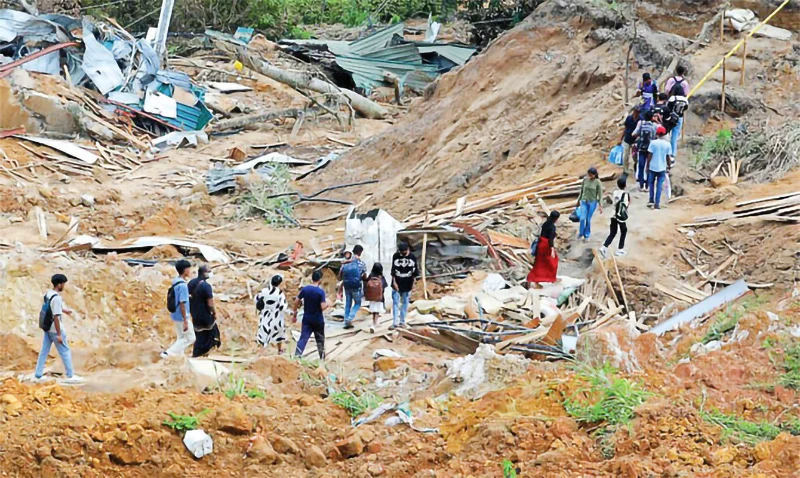
A landslide in Sri Lanka (AFP picture)
Ecological and Human Protection
Ecological consciousness demands
recognition that humanity is part of the Earth, not separate from it. Policies to address climate change must be grounded in this understanding, rather than in worldviews that prize infinite growth and technological dominance. Nature has primacy over human-created systems: the natural world does not depend on humanity, while humanity cannot survive without soil, water, air, sunlight, and the Earth’s essential life-support systems.
Although a climate victim today, Sri Lanka is also home to an ancient ecological civilization dating back to the arrival of the Buddhist monk Mahinda Thera in the 3rd century BCE. Upon meeting King Devanampiyatissa, who was out hunting in Mihintale, Mahinda Thera delivered one of the earliest recorded teachings on ecological interdependence and the duty of rulers to protect nature:
“O great King, the birds of the air and the beasts of the forest have as much right to live and move about in any part of this land as thou. The land belongs to the people and all living beings; thou art only its guardian.”
A stone inscription at Mihintale records that the king forbade the killing of animals and the destruction of trees. The Mihintale Wildlife Sanctuary is believed to be the world’s first.
Sri Lanka’s ancient dry-zone irrigation system—maintained over more than a millennium—stands as a marvel of sustainable development. Its network of interconnected reservoirs, canals, and sluices captured monsoon waters, irrigated fields, controlled floods, and even served as a defensive barrier. Floods occurred, but historical records show no disasters comparable in scale, severity, or frequency to those of today. Ancient rulers, including the legendary reservoir-builder King Parākramabāhu, and generations of rice farmers managed their environment with remarkable discipline and ecological wisdom.
The primacy of nature became especially evident when widespread power outages and the collapse of communication networks during Cyclone Ditwah forced people to rely on one another for survival. The disaster ignited spontaneous acts of compassion and solidarity across all communities—men and women, rich and poor, Buddhists, Christians, Muslims, and Hindus. Local and international efforts mobilized to rescue, shelter, feed, and emotionally support those affected. These actions demonstrated a profound human instinct for care and cooperation, often filling vacuums left by formal emergency systems.
Yet spontaneous solidarity alone is insufficient. Sri Lanka urgently needs policies on sustainable development, environmental protection, and climate resilience. These include strict, science-based regulation of construction; protection of forests and wetlands; proper maintenance of reservoirs; and climate-resilient infrastructure. Schools should teach environmental literacy that builds unity and solidarity, rather than controversial and divisive curriculum changes like the planned removal of history and introduction of contested modules on gender and sexuality.
If the IMF and international creditors—especially BlackRock, Sri Lanka’s largest sovereign bondholder, valued at USD 13 trillion—are genuinely concerned about the country’s suffering, could they not cancel at least some of Sri Lanka’s sovereign debt and support its rebuilding efforts? Addressing the climate emergency and the broader existential crisis facing Sri Lanka and the world ultimately requires an evolution in human consciousness guided by morality, compassion, generosity and wisdom. (Courtesy: IPS NEWS)
Dr Asoka Bandarage is the author of Colonialism in Sri Lanka: The Political Economy of the Kandyan Highlands, 1833-1886 (Mouton) Women, Population and Global Crisis: A Politico-Economic Analysis (Zed Books), The Separatist Conflict in Sri Lanka: Terrorism, Ethnicity, Political Economy, ( Routledge), Sustainability and Well-Being: The Middle Path to Environment, Society and the Economy (Palgrave MacMillan) Crisis in Sri Lanka and the World: Colonial and Neoliberal Origins, Ecological and Collective Alternatives (De Gruyter) and numerous other publications. She serves on the Advisory Boards of the Interfaith Moral Action on Climate and Critical Asian Studies.
Features
Cliff and Hank recreate golden era of ‘The Young Ones’
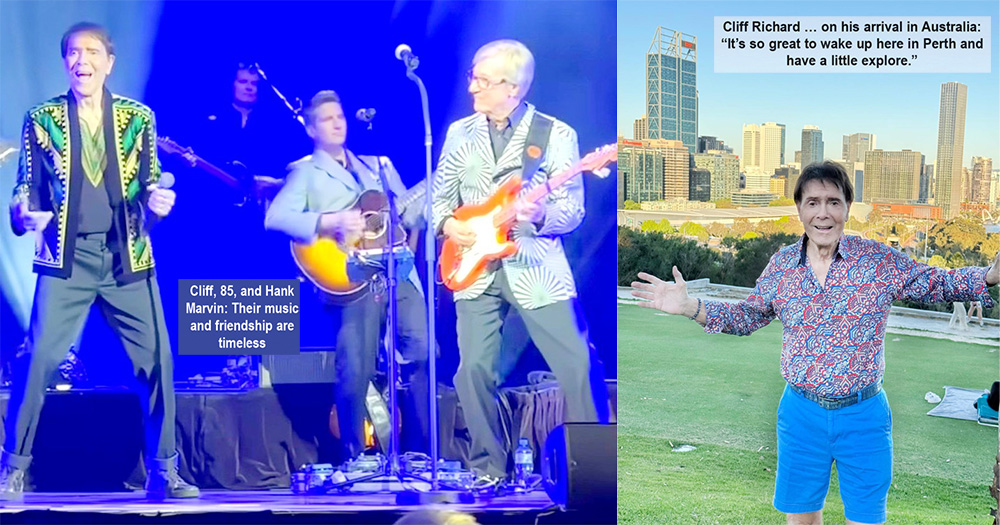
 Cliff Richard and Hank Marvin’s reunion concert at the Riverside Theatre in Perth, Australia, on 01 November, 2025, was a night to remember.
Cliff Richard and Hank Marvin’s reunion concert at the Riverside Theatre in Perth, Australia, on 01 November, 2025, was a night to remember.
The duo, who first performed together in the 1950s as part of The Shadows, brought the house down with their classic hits and effortless chemistry.
The concert, part of Cliff’s ‘Can’t Stop Me Now’ tour, featured iconic songs like ‘Summer Holiday’, ‘The Young Ones’, ‘Bachelor Boy’, ‘Living Doll’ and a powerful rendition of ‘Mistletoe and Wine.’
Cliff, 85, and Hank, with his signature red Fender Stratocaster, proved that their music and friendship are timeless.
According to reports, the moment the lights dimmed and the first chords of ‘Move It’ rang out, the crowd knew they were in for something extraordinary.
Backed by a full band, and surrounded by dazzling visuals, Cliff strode onto the stage in immaculate form – energetic and confident – and when Hank Marvin joined him mid-set, guitar in hand, the audience erupted in applause that shook the hall.
Together they launched into ‘The Young Ones’, their timeless 1961 hit which brought the crowd to its feet, with many in attendance moved to tears.
The audience was treated to a journey through time, with vintage film clips and state-of-the-art visuals adding to the nostalgic atmosphere.
Highlights of the evening included Cliff’s powerful vocals, Hank’s distinctive guitar riffs, and their playful banter on stage.
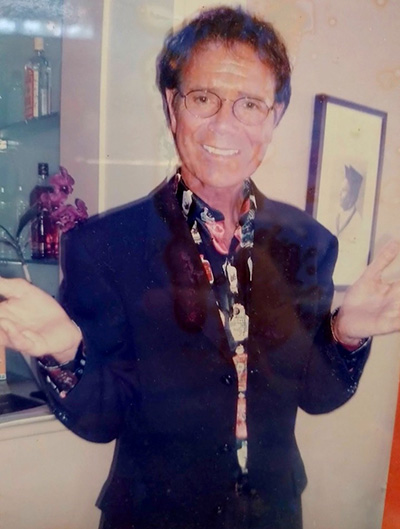
Cliff posing for The Island photographer … February,
2007
Cliff paused between songs to reflect on their shared journey saying:
“It’s been a lifetime of songs, memories, and friendship. Hank and I started this adventure when we were just boys — and look at us now, still up here making noise!”
As the final chords of ‘Congratulations’ filled the theatre, the crowd rose for a thunderous standing ovation that lasted several minutes.
Cliff waved, Hank gave a humble bow, and, together, they left the stage, arm-in-arm, to the refrain of “We’re the young ones — and we always will be.”
Reviews of the show were glowing, with fans and critics alike praising the duo’s energy, camaraderie, and enduring talent.
Overall, the Cliff Richard and Hank Marvin reunion concert was a truly special experience, celebrating the music and friendship that has captivated audiences for decades.
When Cliff Richard visited Sri Lanka, in February, 2007, I was invited to meet him, in his suite, at a hotel, in Colombo, and I presented him with my music page, which carried his story, and he was impressed.
In return, he personally autographed a souvenir for me … that was Cliff Richard, a truly wonderful human being.
-

 News3 days ago
News3 days agoOver 35,000 drug offenders nabbed in 36 days
-

 Features1 day ago
Features1 day agoFinally, Mahinda Yapa sets the record straight
-

 Business5 days ago
Business5 days agoLOLC Finance Factoring powers business growth
-

 News2 days ago
News2 days agoCyclone Ditwah leaves Sri Lanka’s biodiversity in ruins: Top scientist warns of unseen ecological disaster
-

 News5 days ago
News5 days agoCPC delegation meets JVP for talks on disaster response
-

 News5 days ago
News5 days agoA 6th Year Accolade: The Eternal Opulence of My Fair Lady
-

 News3 days ago
News3 days agoRising water level in Malwathu Oya triggers alert in Thanthirimale
-
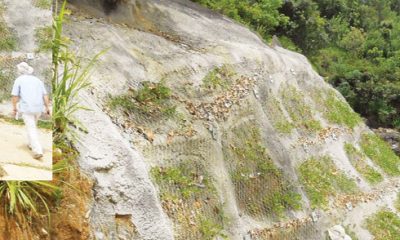
 Features4 days ago
Features4 days agoThe Catastrophic Impact of Tropical Cyclone Ditwah on Sri Lanka:













